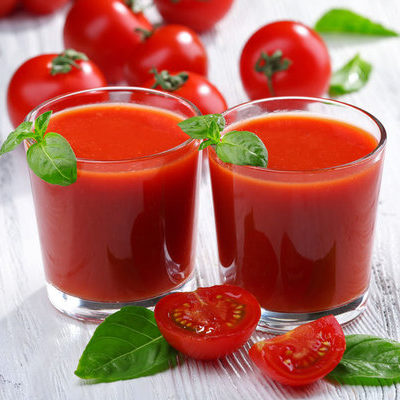
Tomato Juice
What is Tomato Juice?
Tomato juice is a liquid beverage prepared from the extract of ripe tomatoes. This juice can be consumed fresh with seasonings or used to prepare cocktails. It can also be used in cooking as a base for sauces and gravies, as well as marinades for meat and fish.
- It can be made fresh at home or bought in the store.
- The worldwide juice market produced 5.7 million tons in 2017 and is expected to increase to 6.7 million tons by 2025.
The top 10 most popular juice brands are:
- Sacramento
- Mutti
- Amish Salsa Mild
- Toto’s Original Zesty
- Alain Milliat Traditional
- Agromonte Authentic
- Nubeleaf
- Solis Tomate Frito
- Furmano’s
- Bloody Gerry
Origin of tomato juice
This type of juice is an American invention and is generally credited to Louis Perrin, a chef who was working at the upscale French Lick Resort in 1917. One day, he discovered he was out of oranges when he had to serve a group of business people who wanted orange juice. He improvised and made juice from tomatoes, which became an instant hit. A juice company was later formed by French Lick. Within a decade, this drink was easily available on the market.
Commercial production
The production of this is similar to that of tomato paste excluding the concentration phase. This juice is produced during tomato season and fresh, ripe tomatoes with at least 5⁰ Brix are used. The tomatoes are first washed, sorted into different grades, and chopped. The juice is then extracted and filtered before being pasteurized. Finally, it is packaged and marketed. Some brands also add salt, spices, and other seasonings for added flavor.
Nutrition
It contains lycopene, which helps in reducing cardiovascular diseases, osteoporosis, and mental disorders through its anti-oxidative properties. Lycopene has also been shown to alleviate menopause symptoms. This juice is rich in vitamins A, C, E, and K, as well as several B vitamins, including B1 (thiamin), B3 (niacin), B5 (pantothenic acid), B6 (pyridoxine), B7 (biotin).
In addition, this juice also contains magnesium, potassium, copper, and manganese. All these vitamins and minerals increase vision health, regulate the metabolism, and reduce the risk of certain cancers. On the downside, several commercial brands add high amounts of sodium to this juice, which can lead to high blood pressure and other related health problems.
Tomato juice recipes
This drink can be used in various recipes in many different ways. Here are a few recipes:
- Bloody Mary
- Red Snapper
- Sangrita
- Vampiro
- Fresh Juice
- Tomato Soup
- Chicken
- Juice and Noodles
- Bloody Mary Flank Steak Marinade
FDA regulations
The FDA defines the standard of identity for this juice as food obtained from the unfermented liquid extracted from ripe tomatoes and intended for direct consumption. This juice must be free of peels, seeds, and other coarse substances, but may contain pulp. Commercially made juice must be pasteurized in order to prevent spoilage. The juice made from tomato concentrate must be labeled ‘from concentrate’.
References
Hirose, Asuka et al. “Tomato juice intake increases resting energy expenditure and improves hypertriglyceridemia in middle-aged women: an open-label, single-arm study.” Nutrition journal vol. 14 34. 8 Apr. 2015, doi:10.1186/s12937-015-0021-4
https://www.ncbi.nlm.nih.gov/pmc/articles/PMC4406031/
Mandy Oaklander, Should I Drink Tomato Juice?, Time Magazine
https://time.com/3893271/tomato-juice-lycopene/
Joy Neighbors, One Hundred Years of Tomato Juice, French Lick Resort
https://frenchlickresort.blogspot.com/2017/07/one-hundred-years-of-tomato-juice.html
